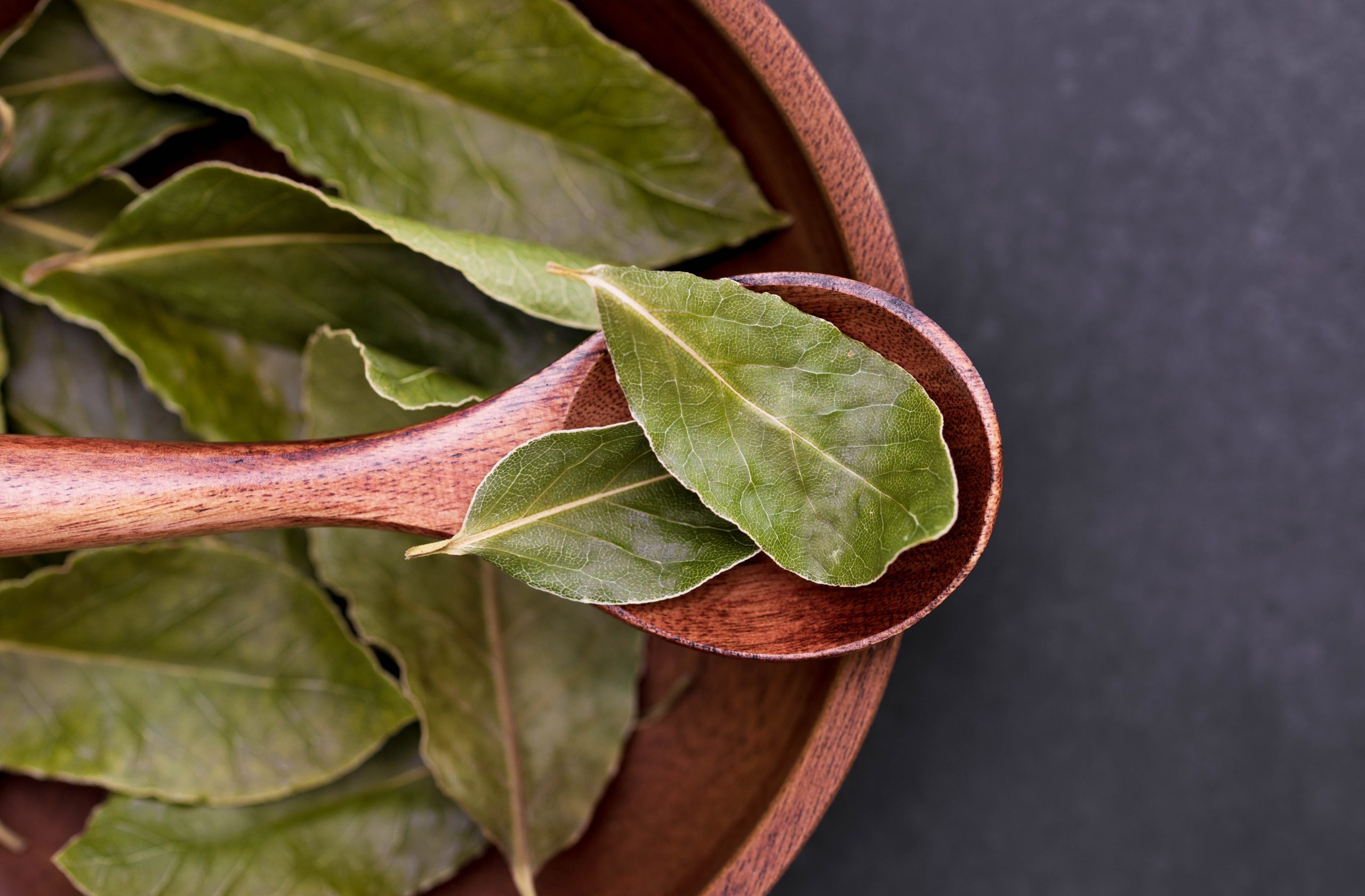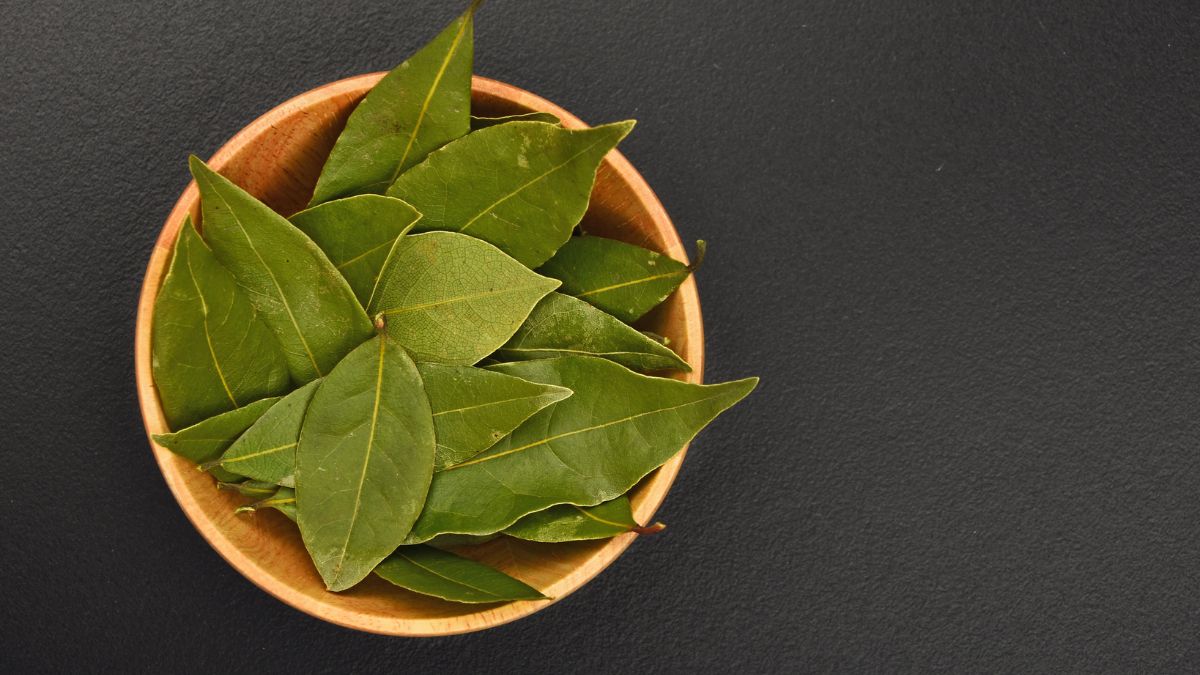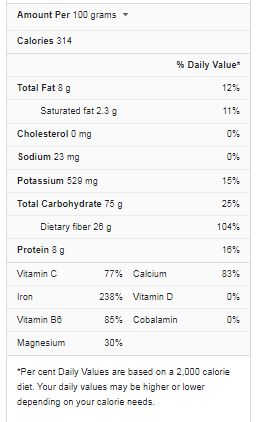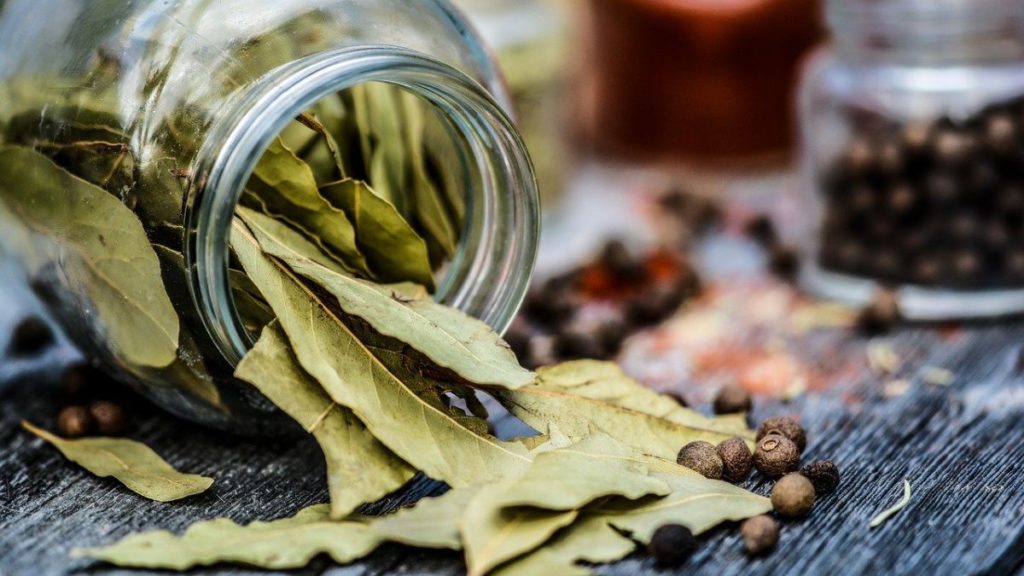The bay leaf comes from the laurel tree and is used as a herb. You can buy bay leaves whole, either fresh or dried, or as a powder. Before the dish is served, the leaves are added to recipes that take a long time to cook, like soups, sauces, and stews. They smell like a mix of flowers and herbs like oregano and thyme, and they are used more than any other herb.
The bay leaf, sometimes known as a laurel leaf, is the leaf of the sweet bay tree (Laurus nobilis), a Mediterranean-native evergreen belonging to the Lauraceae family. These leaves are a bitter-tasting spice often used to flavor stews, stuffings, and fish. They are also used for pickling and marinating foods and adding flavor to stews, stuffings, and fish.
Bay Leaves Nutrition Facts
What are Bay Leaves?
The bay leaf comes from the bay laurel plant, a slow-growing evergreen shrub that grows in warm places. The plants are grown as decorations and then used in cooking after being dried. The long, thick, leathery leaves have sharp points at the ends. Most recipes call for dried bay leaves, which smell stronger than fresh bay leaves.
The Laurus nobilis plant makes these leaves, also called bay laurel or sweet bay. It is a woody shrub that grows in the Mediterranean. The essential oils give them a light scent and flavor that people like. As they age, they get more flavorful, and that flavor is taken out with steam and heat. It can be bitter when you bite into a leaf, but adding it to a slow-cooking recipe, like a soup or stew, gives the dish a rich, herbal, woodsy taste and smell.
The leaves of bay laurel look like the leaves of English laurel, also called cherry laurel. But the plants are very different, and the second one might be dangerous to eat. These leaves used in cooking are about 3 inches (7.6 cm) long and have an oval shape, and they have deep veins and smooth, wave-like edges. When these leaves are fresh, they are shiny and dark green, and when they are dry, they are more of an olive color.
Varieties of Bay Leaves
There are two main kinds of bay leaves used in cooking: Turkish bay leaves (also called Mediterranean bay leaves) and California bay leaves. The most common kind is Turkish, which has a milder flavor than California bay leaves, which are stronger and taste a bit like mint. The shape of the leaf is how you can tell them apart. The leaf of the Turkish variety is short and fat, while the leaf of the California variety is thinner and longer. Most of the fresh bay leaves sold in the U.S. come from California, while most dried bay leaves come from Turkey. Fresh bay leaves from California could make a recipe taste too strong, so dried bay leaves from Turkey are often used instead.
Origins
Other kinds of bay leaves, like the West Indian bay leaf and the Indonesian bay leaf, are used worldwide. Some types of bay leaf, like the cherry laurel and mountain laurel, are poisonous, but these types aren’t sold as herbs. 12 The bay leaves that are looking are not dangerous and are safe.
These leaves have been around for a long time. They were first used as decorations to show honor and success. Roman and Greek emperors, Olympians, scholars, heroes, and poets wore them. This led to the creation of two words: baccalaureate, which means “berries of laurel,” and poet laureate, which a government gives to someone who writes poems for special events.
Fresh vs. Dried
Fresh leaves have a shiny green top and a lighter green bottom. As the leaves dry, they get the same color and become less bright, and the taste also gets stronger. Dried leaves are usually cheaper and last longer than fresh bay leaves.
What do they Taste Like?
Since bay leaves aren’t eaten, their flavor depends more on what they add to a recipe, which is a point of contention. Some cooks think bay leaves don’t add any flavor, while others think they add a subtle depth of flavor. Even though bay leaves don’t add a lot of flavor to a dish, you can think of them as a “supporting actor” because they help bring out the other flavors and spices.
Main Reason to Remove them from your Food
Some harm according to lab tests, some pathogens, like some strains of bacteria and fungus, may be killed by the essential oils in bay leaves, according are not dangerous to people and are safe to use in cooking. Folk medicine has been used for a long time because they kill germs and have other health benefits. They can be eaten, but only in theory. But cooking doesn’t soften their tough, leathery leaves, and their edges can even be sharp.
So, if you swallow them, they could cause you to choke. People have also said that a bay leaf got stuck in their throat or esophagus, and it has also been said that a bay leaf caused a hole in the intestine. You can break them up, but they are likely to feel still. Most recipes say to use bay leaves whole and take them out before serving.
Tips for Cooking with Bay Leaves
- Since bay leaves don’t soften, they’re added to boiling sauces or braising liquids and removed before serving. Sharp leaves can injure the mouth, lungs, and digestive tract.
- Put the whole dried leaf in the recipe and remove it after cooking. Use half the number of fresh California bay leaves (which may mean tearing a leaf in half). Bay leaves should be added early because the longer they boil, the more flavor they release and seep into the meal. Bay leaves can be added to rice water and chicken cavities before roasting. Bay leaf powder is a spice.
- Bay leaves are offered dried because their flavor improves. The produce area sometimes has fresh ones. Bay leaves are easiest to use in soups, stews, and braises. Leave it with meat, veggies, or stock for a mild herb flavor.
- The brine for pickled vegetables might also contain a bay leaf. Leaving them whole makes them simpler to see and remove before serving. Use a tea infuser to remove bay leaf bits.
- The French term “bouquet garni”—meaning “decorated bouquet”—includes bay leaves. It’s a string of herbs added to stock or sauce to improve flavor. If you don’t want to risk eating a bay leaf or want to use it in a spice rub, buy ground bay leaf.
- No matter what you want to do with them, could you not keep them for too long? About 12 months is how long dried bay leaves will last. You can dry them and store them in a container that won’t let air in if you find fresh ones or grow your own. You can also freeze the fresh leaves to keep them for up to a year.
Where to Buy Bay Leaves?
You can buy bay leaves at most big grocery stores. Fresh bay leaves may be harder to find, but you can usually find them in the brother’s fresh herbs. In the produce section, you can find dried bay leaves in the spice aisle of your grocery store, and they come in a jar. Fresh leaves should look bright green and waxy, and they should be able to be bent without breaking. Look for dried leaves that don’t have any spots, tears, or cracks.
Storage Tip
Fresh bay leaves can be kept in the refrigerator for a week or two in a zip-top bag that has been sealed. Dried bay leaves can be controlled in an airtight container in a cool, dark, dry place, like the spice cabinet or pantry, for up to two years before they lose their smell. You can also put dried bay leaves in a sealed bag and put them in the freezer, this will help the bay leaves keep their flavor and floral power.
What are the Health Benefits of Bay Leaves?
1. Bay Leaf Digestion Benefits
Bay leaves have a very strong effect on the digestive system. As a diuretic, they make you urinate, which lowers the body’s toxicity. As an emetic, they make you throw up if you’ve eaten something toxic. Also, the organic compounds in bay leaves are very good at calming upset stomachs, easing the symptoms of irritable bowel syndrome, and even making Celiac disease less painful.
If you have trouble digesting, bay leaf oil or bay leaf tea can help. Some of the more complex proteins in the modern diet can be hard to digest, but bay leaves have special enzymes that help digestion and nutrient absorption.
Reference: Bay Leaf: Potential Health Benefits
2. Bay Leaves for Respiratory System Benefits
When the essential oil of bay leaves is taken out, it can be mixed with other ingredients to make a salve that can be put on the chest to help with some respiratory problems. A poultice made from the leaves can also do this. The mixture is put on the chest and left there overnight.
The Bay leaf is good for the respiratory system. Inhaling the vapors has a similar effect to aromatherapy and can loosen up the phlegm and get rid of harmful bacteria that may be stuck in the respiratory tract. This is because it has a natural ability to kill germs.
3. Bay Leaf Benefits for Hair Growth
4. Bay Leaves Anti-Inflammatory Properties
5. Helps in Improving Heart Health
6. Bay Leaf Helps in Cancer Prevention
7. Burning Bay Leaves Reduces Anxiety and Stress
What is the Nutritional Value of Bay Leaves per 100gm?
So let’s check out the bay leaves nutrition facts; 100 grams of leaves contains 314 kcal of energy, 8 grams of proteins, 5.4 grams of water, 75 grams of carbohydrates, 26 grams of dietary fiber, 8 grams of total fat (out of which saturated fat is 2.3 grams, monounsaturated fat is 1.6 grams, polyunsaturated fat is 2.3 grams, omega-3 fatty acids is 1.1 grams and omega-6 fatty acids is 1.2 grams). The vitamins present are Vitamin A, Vitamin C, Thiamine, Riboflavin, Niacin, Vitamin B6, and Folate. Calcium, Iron, Magnesium, Phosphorous, Potassium, Sodium, Zinc, Copper, Manganese, and Selenium are the minerals in leaves.
Conclusion
The bay leaf is a Mediterranean herb that makes soups, stews, and other owly foods. If you eat them plain, they don’t taste all that great, but if you give your dish a nice herbal taste. Whether you cook with them, you call them bay leaves, bay laurel, or sweet laurel; this herb from the Mediterranean is often used in soups, stews, and meats that have been braised.
Before you eat, you should take off the whole leaves or pieces of leaves. But it’s not because they’re poisonous; it’s bad cause someone to choke. If you’re worried about accidentally swallowing one, put it in a tea infuser or make a bouquet garni bundle with them and other fresh herbs. Both of these options make it easier to get rid of them.



